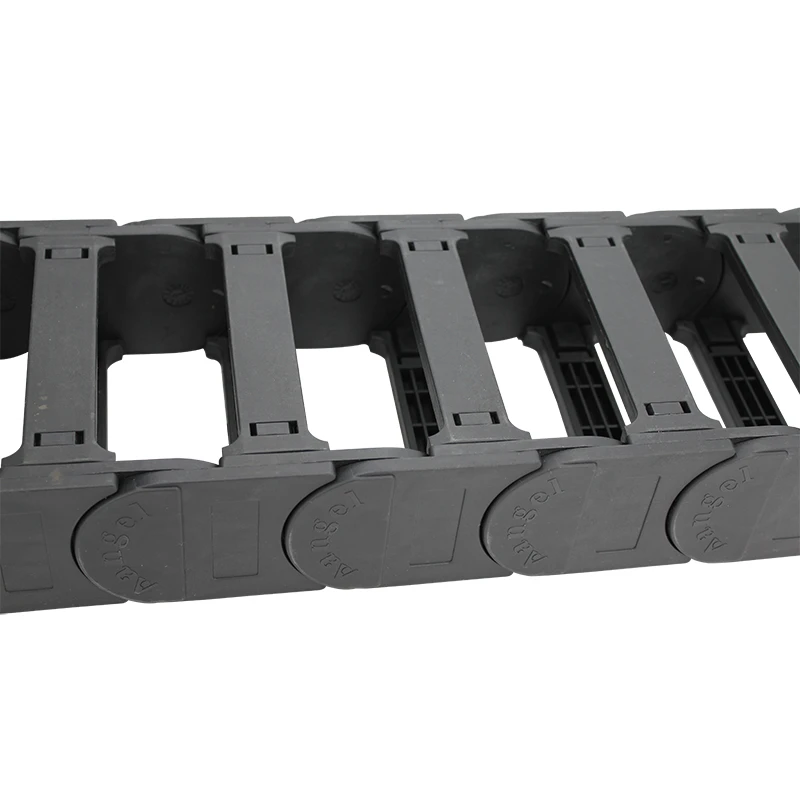steel cable carrier
Understanding Steel Cable Carriers A Comprehensive Overview
Steel cable carriers, often referred to as cable drag chains or cable carriers, play an integral role in various industrial applications. These robust structures are designed to guide and protect cables and hoses in dynamic motion, ensuring the safe and efficient operation of machinery and automation systems. This article delves into the significance of steel cable carriers, their applications, advantages, and maintenance.
The Importance of Steel Cable Carriers
In sectors like manufacturing, robotics, and material handling, equipment must operate smoothly and without hindrance. Cables and hoses can become tangled, damaged, or subjected to excessive wear if not properly managed, leading to costly downtime and repairs. Steel cable carriers serve as a solution to these challenges. By enclosing and guiding sensitive cables or hoses, they mitigate potential hazards, extend the life of the components, and enhance the overall efficiency of machinery.
Applications of Steel Cable Carriers
Steel cable carriers are versatile and can be found in an array of applications across different industries
1. Robotics In robotic arms, cable carriers ensure that power and signal cables do not interfere with the arm’s movements, which is crucial for precision and safety.
2. Manufacturing Equipment Conveyor systems, CNC machines, and other automated equipment utilize steel cable carriers to streamline operations. They maintain the organization of cables, allowing machinery to operate without interruptions.
3. Material Handling In warehouses, automated guided vehicles (AGVs) and forklifts utilize cable carriers to manage the cables associated with their operation, enabling them to navigate without the risk of snagging or damage.
4. Construction Equipment Heavy machinery and cranes often require dependable cable management solutions to maintain performance, especially in environments where movement is fast and unpredictable.
Advantages of Steel Cable Carriers
The choice of steel as the material for cable carriers brings several advantages
steel cable carrier

- Durability Steel cable carriers are inherently strong, making them resistant to wear and tear, even in demanding conditions
. They can withstand high stress and heavy loads, ensuring long-term reliability.- Temperature Resistance Steel can endure a wide range of temperatures, making these carriers suitable for environments where other materials might fail due to heat or cold.
- Reduced Maintenance With proper installation and usage, steel cable carriers can significantly decrease the frequency of maintenance checks. This reliability translates into lower operational costs over time.
- Customization Manufacturers provide various sizes, shapes, and configurations of steel cable carriers. This adaptability allows industries to select carriers that perfectly match their specific needs.
Maintenance and Best Practices
To ensure the longevity and efficiency of steel cable carriers, regular maintenance is essential. Here are some best practices
1. Inspection Conduct periodic inspections to check for signs of wear or damage. This can prevent unexpected failures in critical operations.
2. Lubrication Proper lubrication of moving parts may be necessary, especially in high-friction applications, to reduce wear and enhance performance.
3. Load Management Always adhere to the manufacturer's specifications regarding load capacities to prevent stress on the carrier and the cables inside.
4. Cleanliness Keeping the cable carrier free from debris and contaminants can help maintain its efficiency. Regular cleaning can prevent blockages and functional failures.
Conclusion
Steel cable carriers are indispensable in maintaining the integrity of cable management systems in various industrial applications. Their durability, versatility, and ability to enhance operational safety make them a preferred choice in environments where efficiency is paramount. By understanding the importance and maintenance of steel cable carriers, industries can optimize their operations and prolong the life of their equipment. With the right practices in place, these carriers can continue to serve as a backbone for modern machinery solutions for years to come.








